As a CNC machining service provider, we at Richconn understand the significance of precision engineering and how it's all about the details. In the realm of mechanical components, one topic that piques the curiosity of engineers, manufacturers, and professionals alike is "Machined Springs." In this comprehensive guide, I will walk you through the intricacies of Machined Springs, from the fundamentals to their applications, performance characteristics, manufacturing processes, and more. By the end of this journey, you will have a profound understanding of Machined Springs and how they can be a game-changer in your projects.
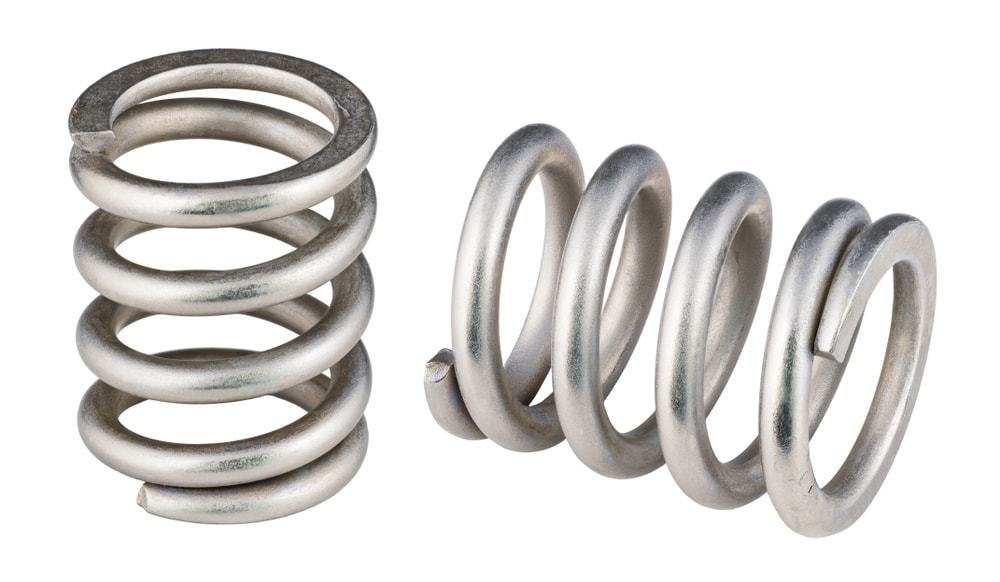
To truly appreciate Machined Springs, we must start with the fundamentals of springs. Springs are ingenious mechanical devices designed to store mechanical energy when compressed or stretched and release it when the force is removed. These components come in a multitude of forms, each tailored to specific applications.
Springs are vital in countless applications, from the suspension system in your car to the delicate mechanisms inside a wristwatch. Their versatility stems from their ability to absorb and release energy, making them an integral part of various industries.
Machined Springs, in particular, are a category of springs that stand out for their precision engineering and manufacturing process. They are meticulously crafted through CNC machining, ensuring unparalleled accuracy and performance. Let's delve deeper into what sets Machined Springs apart:
Precision Engineering: Machined Springs are the result of precision engineering. They are custom-designed to meet the exact specifications of the application, allowing for optimal performance and durability.
Materials: The choice of materials for Machined Springs is critical. These springs are often crafted from materials like stainless steel, alloy steel, titanium, and more, depending on the desired characteristics and the application's demands.
Meticulous Manufacturing: The production of Machined Springs involves CNC machining, a process known for its precision and consistency. This meticulous approach ensures that each spring meets the highest standards.
Springs come in various forms, each tailored to specific tasks. Here are some of the common spring types:
Compression Springs: These springs are designed to resist compressive forces. When you push them together, they push back, providing resistance. They are commonly used in applications like shock absorbers and mattress springs.
Extension Springs: Extension springs, as the name suggests, extend when a force is applied to them. They are often found in garage doors, trampolines, and various mechanical devices.
Torsion Springs: Torsion springs are engineered to provide torque or rotational force. They are prevalent in door hinges, clipboards, and even the mechanisms that make retractable pens work.
Machined Springs: Machined Springs fall into a category of their own. These springs are precisely engineered and crafted using CNC machining. They offer a unique combination of precision and performance.
The versatility of springs knows no bounds, as they find applications in various industries:
Manufacturing: Springs are essential in manufacturing equipment, from CNC machines to stamping presses. They assist in controlling and regulating various mechanical processes.
Automotive: In the automotive industry, springs play a crucial role in suspension systems, clutch mechanisms, and even engine components. The right springs ensure a smoother ride and better vehicle performance.
Aerospace: In aerospace applications, reliability is paramount. Springs are used in landing gear, flight control systems, and safety mechanisms. Machined Springs, with their precision, are a trusted choice.
Medical: Medical devices require precision and durability. Springs are used in devices like surgical instruments, diagnostic equipment, and implantable devices. Machined Springs' precision ensures these devices function flawlessly.
Understanding the specific functions of each type is crucial for selecting the right spring for your project. Whether you need a compression spring for a shock absorber or a Machined Spring for a critical aerospace component, knowing the right type is essential.
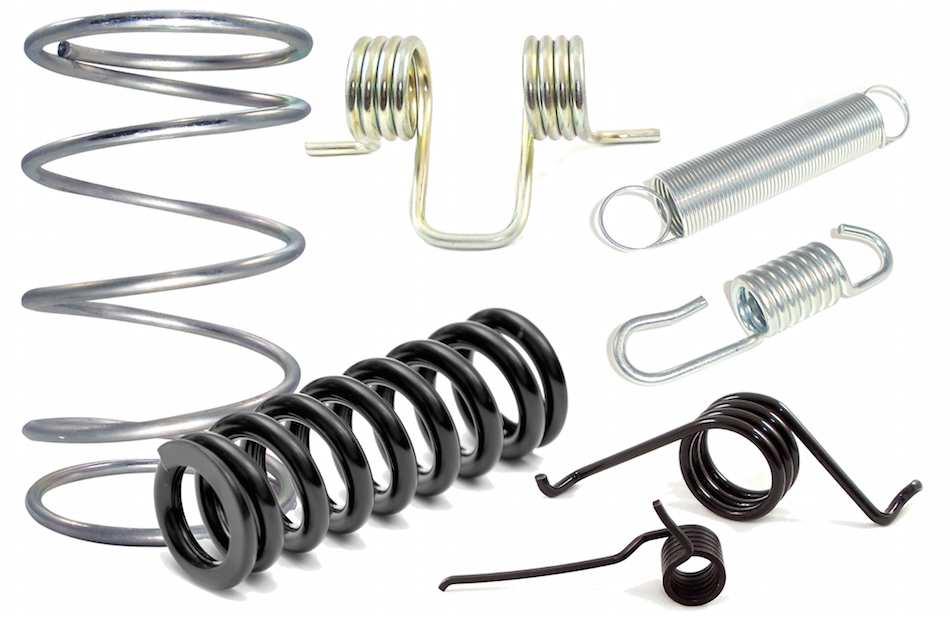
Machined Springs are renowned for their exceptional elasticity and impressive load-bearing capacity. Here's a closer look at these critical characteristics:
Elasticity: Elasticity refers to a spring's ability to deform when a force is applied and return to its original shape when the force is removed. Machined Springs are engineered to exhibit high elasticity, making them efficient energy storage devices. When compressed or stretched, they absorb and store mechanical energy, releasing it when the force is released.
Load-Bearing Capacity: The load-bearing capacity of a spring measures its ability to withstand external forces without permanent deformation. Machined Springs are designed to support heavy loads while maintaining their structural integrity. This characteristic ensures that they can function reliably in demanding applications without succumbing to fatigue or failure.
In practical terms, the impressive elasticity and load-bearing capacity of Machined Springs make them suitable for a wide range of applications, from precision instruments to industrial machinery.
Durability is a fundamental consideration in the selection of springs for various applications. Machined Springs are known for their exceptional longevity and durability, thanks to several factors:
Precision Manufacturing: The precision engineering and manufacturing of Machined Springs play a significant role in their durability. Each spring is meticulously crafted to meet exact specifications, ensuring that it can withstand the rigors of its intended application.
Material Selection: The choice of materials is crucial in determining a spring's durability. Machined Springs are often crafted from high-quality materials, such as stainless steel, alloy steel, or titanium. These materials are selected based on their corrosion resistance, strength, and other characteristics that contribute to longevity.
Heat Treatment: To further enhance their durability, Machined Springs often undergo heat treatment. This process improves the spring's strength and resistance to deformation, ensuring it can maintain its performance over an extended service life.
Surface Finish: The surface finish of Machined Springs is another aspect that contributes to their durability. Applying appropriate surface treatments, such as polishing or coating, enhances their resistance to corrosion and wear, making them suitable for even the harshest environments.
Machined Springs are designed to provide consistent performance over extended periods, reducing the need for frequent replacements and maintenance. This is particularly valuable in applications where reliability is critical, such as aerospace, medical devices, and industrial machinery.
In challenging environments with extreme temperatures or exposure to corrosive substances, the heat and corrosion resistance of Machined Springs become paramount. Here's how these springs excel in such conditions:
High-Temperature Resistance: Machined Springs are engineered to withstand high temperatures without compromising their performance. This quality is essential in applications where springs are exposed to elevated heat levels, such as aircraft engines or industrial ovens.
Corrosion Resistance: Many applications involve exposure to moisture, chemicals, or other corrosive elements. Machined Springs are often crafted from materials with excellent corrosion resistance, such as stainless steel or titanium. These materials prevent the springs from corroding or deteriorating in harsh environments.
The heat and corrosion resistance of Machined Springs make them suitable for applications where other springs might degrade or fail. Their ability to maintain performance in extreme conditions is a testament to their precision engineering and high-quality materials.
Machined Springs are renowned for their exceptional elasticity and impressive load-bearing capacity. Here's a closer look at these critical characteristics:
Elasticity: Elasticity refers to a spring's ability to deform when a force is applied and return to its original shape when the force is removed. Machined Springs are engineered to exhibit high elasticity, making them efficient energy storage devices. When compressed or stretched, they absorb and store mechanical energy, releasing it when the force is released.
Load-Bearing Capacity: The load-bearing capacity of a spring measures its ability to withstand external forces without permanent deformation. Machined Springs are designed to support heavy loads while maintaining their structural integrity. This characteristic ensures that they can function reliably in demanding applications without succumbing to fatigue or failure.
In practical terms, the impressive elasticity and load-bearing capacity of Machined Springs make them suitable for a wide range of applications, from precision instruments to industrial machinery.
Durability is a fundamental consideration in the selection of springs for various applications. Machined Springs are known for their exceptional longevity and durability, thanks to several factors:
Precision Manufacturing: The precision engineering and manufacturing of Machined Springs play a significant role in their durability. Each spring is meticulously crafted to meet exact specifications, ensuring that it can withstand the rigors of its intended application.
Material Selection: The choice of materials is crucial in determining a spring's durability. Machined Springs are often crafted from high-quality materials, such as stainless steel, alloy steel, or titanium. These materials are selected based on their corrosion resistance, strength, and other characteristics that contribute to longevity.
Heat Treatment: To further enhance their durability, Machined Springs often undergo heat treatment. This process improves the spring's strength and resistance to deformation, ensuring it can maintain its performance over an extended service life.
Surface Finish: The surface finish of Machined Springs is another aspect that contributes to their durability. Applying appropriate surface treatments, such as polishing or coating, enhances their resistance to corrosion and wear, making them suitable for even the harshest environments.Richconn can provide you with secondary services for these surface treatments, including polishing services, PVD coating services, and anodizing services.
Machined Springs are designed to provide consistent performance over extended periods, reducing the need for frequent replacements and maintenance. This is particularly valuable in applications where reliability is critical, such as aerospace, medical devices, and industrial machinery.
In challenging environments with extreme temperatures or exposure to corrosive substances, the heat and corrosion resistance of Machined Springs become paramount. Here's how these springs excel in such conditions:
High-Temperature Resistance: Machined Springs are engineered to withstand high temperatures without compromising their performance. This quality is essential in applications where springs are exposed to elevated heat levels, such as aircraft engines or industrial ovens.
Corrosion Resistance: Many applications involve exposure to moisture, chemicals, or other corrosive elements. Machined Springs are often crafted from materials with excellent corrosion resistance, such as stainless steel or titanium. These materials prevent the springs from corroding or deteriorating in harsh environments.
The heat and corrosion resistance of Machined Springs make them suitable for applications where other springs might degrade or fail. Their ability to maintain performance in extreme conditions is a testament to their precision engineering and high-quality materials.
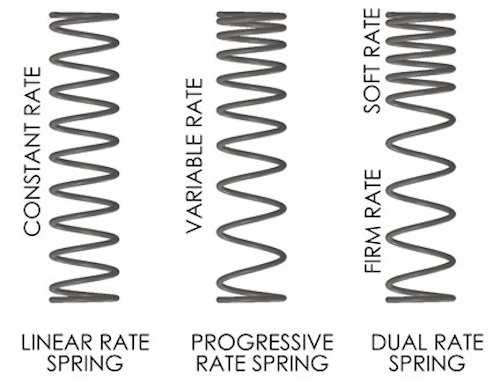
Machined Springs owe their precision and reliability to a meticulous manufacturing process.
Selecting the right material is the foundational step in Machined Springs' manufacturing process. The choice of material depends on the specific application and the desired characteristics of the spring. Common materials used for Machined Springs include:
Stainless Steel: Stainless steel offers excellent corrosion resistance and high strength, making it a suitable choice for aerospace, medical, and automotive applications.
Alloy Steel: Alloy steel combines high strength with good fatigue resistance, making it ideal for demanding industrial applications.
Titanium: Titanium is a lightweight material known for its high corrosion resistance, making it a preferred choice in the medical and aerospace industries.
Inconel: Inconel is prized for its high-temperature resistance and corrosion resistance, making it suitable for industrial applications subjected to extreme conditions.
Phosphor Bronze: Phosphor bronze is valued for its good electrical conductivity and moderate strength, making it a popular choice in electronics and precision instruments.
The production of Machined Springs is a precise and carefully orchestrated process. The steps involved in crafting these springs include:
Material Preparation: The chosen material is prepared for machining, which may include cutting it into the required dimensions or shapes.
Design: A critical step in crafting Machined Springs is the design phase. Engineers create a detailed design that considers the spring's dimensions, geometry, and stress analysis. This design is essential to ensure the spring functions as intended.
CNC Machining: The heart of Machined Springs' manufacturing process is CNC machining. Computer Numerical Control (CNC) machines are used to shape the spring precisely according to the design specifications. This step ensures the spring's dimensions are accurate, and its surface finish is of the highest quality.
Heat Treatment: To enhance the spring's strength and durability, it often undergoes heat treatment. This process involves heating the spring to specific temperatures and then cooling it gradually. Heat treatment can significantly improve the spring's mechanical properties, such as hardness and toughness.
Surface Finish: The surface finish of the spring is crucial for its performance and longevity. Depending on the application and material, various surface treatments may be applied. These treatments can include polishing, coating, or other finishing processes to enhance the spring's corrosion resistance and wear characteristics.
Quality Control and Testing: Quality control and testing are integral parts of Machined Springs' manufacturing. Rigorous inspections and testing procedures are conducted throughout the process to ensure the spring meets stringent quality standards. This includes dimensional checks, stress tests, and other quality assessments.
Quality control is a non-negotiable aspect of crafting Machined Springs. Ensuring that each spring meets the highest standards is crucial for their performance and reliability. Here are some key quality control measures:
Dimensional Checks: Machined Springs undergo rigorous dimensional checks to ensure they meet precise specifications. This includes verifying the spring's diameter, length, and other critical dimensions.
Stress Testing: Springs are subjected to stress tests to evaluate their load-bearing capacity and elasticity. These tests help ensure that the spring can perform reliably under various forces.
Surface Finish Inspection: The surface finish of the spring is inspected to confirm that it meets the required standards. This step is essential for corrosion resistance and overall aesthetics.
Material Verification: The material used in the spring is verified to ensure it matches the specified material, further ensuring quality and performance.
Corrosion Resistance Testing: Depending on the application, corrosion resistance testing may be performed to confirm the spring's ability to withstand harsh environments.
The combination of precision engineering, high-quality materials, and stringent quality control measures results in Machined Springs that excel in precision and performance.
When it comes to selecting the right spring for your application, it's essential to consider how Machined Springs compare to other spring types. Here, we'll explore the differences and similarities between Machined Springs, compression springs, extension springs, and torsion springs.
Compression Springs: These springs are designed to resist compressive forces. When a load is applied, they push back, offering resistance. They are commonly used in applications like shock absorbers, mattress springs, and automotive suspension systems.
Machined Springs: Machined Springs are engineered with precision and crafted using CNC machining. They are designed to provide optimal performance with a high degree of accuracy and reliability. While compression springs are versatile, Machined Springs offer superior precision and are ideal for applications where accuracy is paramount, such as medical devices and aerospace components.
Extension Springs: Extension springs extend when a force is applied, making them suitable for applications like garage doors, trampolines, and various mechanical devices.
Machined Springs: Machined Springs stand out for their precision engineering. They offer unmatched accuracy and reliability. While extension springs are valuable in their own right, Machined Springs excel in applications where precision is essential, such as fine instruments and electronic devices.
Comparing Machined Springs to other spring types reveals that Machined Springs offer a unique combination of precision and performance that sets them apart in applications where precision, reliability, and durability are paramount.
Selecting the right spring for your application involves considering several key factors:
To choose the appropriate spring type, start by thoroughly analyzing your application's specific requirements:
Load Requirements: Determine the load-bearing capacity needed for your application. This will guide you in selecting a spring with the right strength and elasticity.
Precision and Accuracy: If your application demands precision and accuracy, consider Machined Springs, which are known for their precision engineering.
Environmental Conditions: Consider the environment in which the spring will operate. If it's exposed to extreme temperatures or corrosive substances, heat and corrosion resistance become crucial factors.
Durability and Longevity: Assess how long the spring needs to function reliably without maintenance or replacement. Machined Springs are known for their durability and long service life.
Customization: If your application requires a custom-designed spring, Machined Springs offer the flexibility to meet your exact specifications.
Ensure that the springs you choose meet or exceed industry standards and quality control measures. The reliability of your application depends on the quality of the springs you select.
The choice of the right spring type is essential for the success of your project. Machined Springs are a remarkable choice when precision, accuracy, and reliability are of utmost importance. Their ability to withstand challenging environments, coupled with their longevity and exceptional performance, makes them a valuable asset in various industries.
At Richconn, we understand the significance of precision and reliability when it comes to Machined Springs. We are committed to providing high-quality springs that meet your unique requirements.
Our team at Richconn is composed of experienced professionals who specialize in CNC machining and precision engineering. We have a deep understanding of the intricacies of Machined Springs and have successfully delivered precision springs for various applications.
Custom Solutions: We work closely with our clients to create custom-designed Machined Springs that meet their exact specifications. This approach ensures that the springs we deliver are tailored to your unique needs.
Precision Machining: Richconn's Machined Springs are crafted with precision CNC machining, guaranteeing the highest level of accuracy and performance. Our machining processes are state-of-the-art and ensure consistency across every spring we produce.
Quality Assurance: Quality is at the core of our operations. Our rigorous quality control measures ensure that each spring we manufacture meets or exceeds industry standards. We take pride in delivering reliable and durable springs to our clients.
Our track record speaks for itself. Richconn's Machined Springs have delivered exceptional performance and reliability in a variety of applications. Let's explore a few customer case studies that highlight the versatility and precision of our Machined Springs:
Case Study 1: Aerospace Component
In a critical aerospace application, our client required springs that could withstand extreme temperature variations and maintain precision. Richconn designed and delivered Machined Springs crafted from high-temperature-resistant materials. The springs have been in operation for several years, consistently performing under challenging conditions.
Case Study 2: Medical Device
A medical device manufacturer approached Richconn with a need for precision springs for a life-saving medical device. Our team worked closely with the client to design Machined Springs that met the device's stringent requirements. These springs have been an integral part of the medical device, ensuring its reliability and accuracy in critical procedures.
Case Study 3: Industrial Machinery
In the industrial machinery sector, our client required springs that could handle heavy loads and maintain accuracy in a high-stress environment. Richconn's Machined Springs were customized to meet these demands. They have proven to be a reliable component in the client's machinery, contributing to its efficient operation.
In conclusion, Richconn's commitment to precision engineering, quality, and reliability makes us a trusted partner for Machined Springs. We have a proven track record of delivering precision springs that excel in various applications, from aerospace to medical devices and industrial machinery.
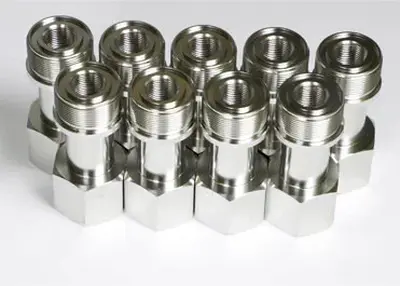 Ten Questions and Answers About Stainless Steel Valves: Unlocking the Secrets of Check ValvesAugust 11, 2023IntroductionIn this comprehensive article, we will delve deep into the mysteries of stainless steel valves, with a particular focus on the working principles and applications of check valves across di...view
Ten Questions and Answers About Stainless Steel Valves: Unlocking the Secrets of Check ValvesAugust 11, 2023IntroductionIn this comprehensive article, we will delve deep into the mysteries of stainless steel valves, with a particular focus on the working principles and applications of check valves across di...view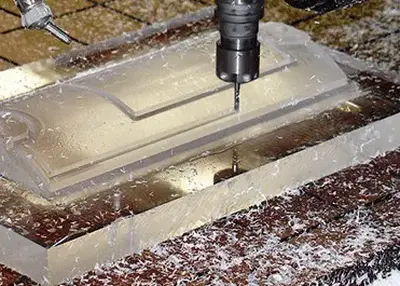 Unlocking Creativity: Exploring the World of CNC Acrylic MachiningNovember 15, 2023Welcome to the realm where precision meets creativity, where the art of CNC (Computer Numerical Control) technology converges with the transparent beauty of acrylic. In this journey, we will delve into the intricate world of CNC Acrylic machining, unveiling its applications, design inspirations, material synergies, and real-world case studies.view
Unlocking Creativity: Exploring the World of CNC Acrylic MachiningNovember 15, 2023Welcome to the realm where precision meets creativity, where the art of CNC (Computer Numerical Control) technology converges with the transparent beauty of acrylic. In this journey, we will delve into the intricate world of CNC Acrylic machining, unveiling its applications, design inspirations, material synergies, and real-world case studies.view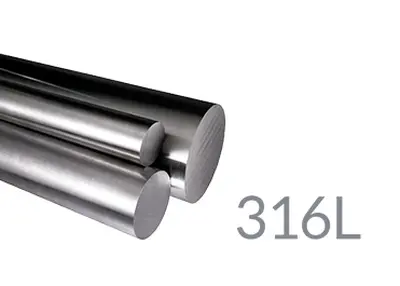 Excellent Corrosion Resistance of Stainless Steel-316L Stainless SteelOctober 24, 2023Dear viewers, today we are going to talk about an amazing material - 316L stainless steel. Did you know? This ordinary-looking material has amazing corrosion resistance! 316L stainless steel as a low carbon series of 316 steel, in addition to the same characteristics with 316 steel, its resistance to grain boundary corrosion is excellent, let's take a look at it!view
Excellent Corrosion Resistance of Stainless Steel-316L Stainless SteelOctober 24, 2023Dear viewers, today we are going to talk about an amazing material - 316L stainless steel. Did you know? This ordinary-looking material has amazing corrosion resistance! 316L stainless steel as a low carbon series of 316 steel, in addition to the same characteristics with 316 steel, its resistance to grain boundary corrosion is excellent, let's take a look at it!view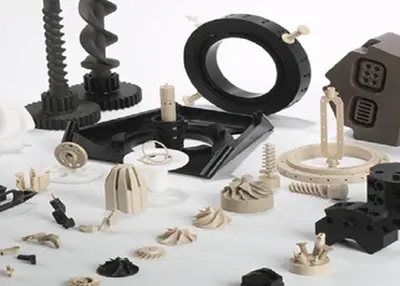 The Features and Characteristics of CNC Milling MaterialsFebruary 29, 2024CNC milling, a cornerstone in the manufacturing processes of various industries, hinges significantly on the selection of materials.view
The Features and Characteristics of CNC Milling MaterialsFebruary 29, 2024CNC milling, a cornerstone in the manufacturing processes of various industries, hinges significantly on the selection of materials.view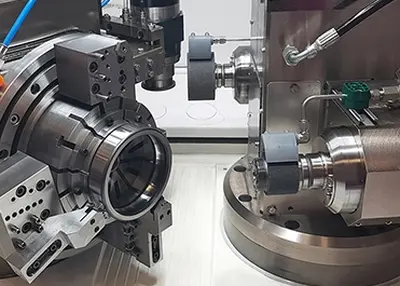 Understanding machining tools: types, uses and selectionNovember 1, 2023Machining tools are vital tools in manufacturing, used to cut, chip, grind and shape a wide range of materials, from metals to plastics to wood. Different tool types are used for different processes and materials to meet a variety of machining needs. Below are five common types of machining tools that are used in a wide range of manufacturing and processing applications.view
Understanding machining tools: types, uses and selectionNovember 1, 2023Machining tools are vital tools in manufacturing, used to cut, chip, grind and shape a wide range of materials, from metals to plastics to wood. Different tool types are used for different processes and materials to meet a variety of machining needs. Below are five common types of machining tools that are used in a wide range of manufacturing and processing applications.view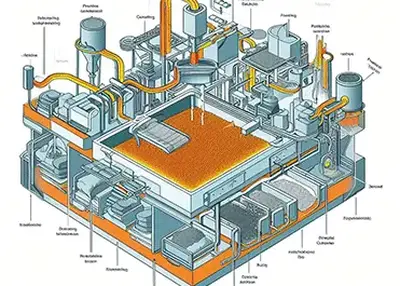 What is the Powder Bed Fusion Process?November 28, 2023Powder bed fusion (PBF) is a type of additive manufacturing, or 3D printing, that uses a heat source, such as a laser or an electron beam, to melt and fuse material powder together to create solid parts.view
What is the Powder Bed Fusion Process?November 28, 2023Powder bed fusion (PBF) is a type of additive manufacturing, or 3D printing, that uses a heat source, such as a laser or an electron beam, to melt and fuse material powder together to create solid parts.view